Lexi Revellian's Blog, page 11
July 23, 2013
Chris Blake is a fake - lying author biographies
We all know that JK Rowling made up an elaborate identity for her alter ego, Robert Galbraith, including claims that he was married with two sons, and had worked in the Special Investigation Branch of the Royal Military Police. This caused a stir in America, where it is thought very bad form indeed to impersonate military personnel.
I've just come across another instance of, well, lying about the identity of an author in such a way as to persuade a potential reader to buy the book. It's an interesting story.
Carl Ashmore wrote a children's series called The Time Hunters . He self-published and did well with it, but before this he put it on the writers' site Authonomy, where in 2010 it won a gold star and a critique by an anonymous Harper Collins editor. The editor said, 'I really enjoyed reading THE TIME HUNTERS. You start off the action with a bang, drawing the reader in right away. Your writing is strong, and in places has a classic feel.... It has terrific potential.'
Maybe Carl's book impressed that editor a little too much. Three years later, Harper Collins has published a children's series called Time Hunters, which bears some similarities to Carl's original version. Coincidence? Harper Collins had put together the idea, titles and outlines for the books, and contracted a writer via Hothouse Fiction to write them for a flat fee. (The author - female - told Carl she had not read his novels.) Three years is about the time you'd expect for trad publishing to commission and bring three books to market.
And Harper Collins made up this artful and completely false bio for its new 'author', which you can read on the book's Amazon page:
About the Author
Chris Blake lives in the South West, not far from Tintagel Castle, rumoured to be the home of King Arthur. Ever since he was a little boy Chris has always dreamed about travelling through time. He likes watching Doctor Who and looks forward to the day that time-travel is possible as he’d love to visit all the places in his books. In the meantime Chris will keep writing his own adventures. Chris has an old black cat called Merlin.
I realize I take author bios at face value. Mine is honest, and I assume others are too. Perhaps I am wrong, and some don't give a damn about veracity, just write whatever bio they think will sell most books. I don't think much of that.
Read Carl's post on the subject here.
Published on July 23, 2013 10:45
July 19, 2013
The home life of Russian oligarchs
While researching my latest novel, I came across this commercial. I love the giraffe.
Published on July 19, 2013 09:38
July 14, 2013
JK Rowling publishes (briefly) under another name
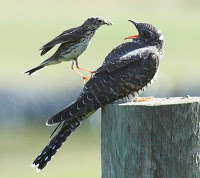 I don't expect I'm breaking this news to anyone. But it does strike me as raising a number of interesting questions.
I don't expect I'm breaking this news to anyone. But it does strike me as raising a number of interesting questions.Kate Mills, fiction editor at Orion Books, admitted she had turned down the crime novel, which she described as well-written but quiet. She tweeted: So, I can now say that I turned down JK Rowling. I did read and say no to Cuckoo's Calling. Anyone else going to confess?
JKR published with Sphere, part of Little, Brown Book Group which published The Casual Vacancy. So does this mean she tried to find a publisher using only her nom de plume, Robert Galbraith, but failed and had to turn to her own publisher - who would naturally be eager to publish a new JKR?
The Cuckoo's Calling launched 18th April 2013, with many glowing reviews from reviewers who would normally be reluctant to read a newbie author. Were they tipped off? Or did Little, Brown just push the book very hard, having paid a lot up front?
Until the revelation today, sales were modest and the book had only a handful of readers' reviews on Amazon. Author Ian Rankin wrote: "So a debut novelist, garnering good quotes from famed authors for the cover plus good reviews, can expect to sell only a few hundred copies."
So who let the cat out of the bag? It must have been terribly frustrating for the publishers, watching the book sitting there, knowing with just a few words it could be selling thousands of copies per day...
The novel comes with a fake author bio: Born in 1968, Robert Galbraith is married with two sons. After several years with the Royal Military Police, he was attached to the SIB (Special Investigation Branch), the plain-clothes branch of the RMP. He left the military in 2003 and has been working since then in the civilian security industry. The idea for protagonist Cormoran Strike grew directly out of his own experiences and those of his military friends who have returned to the civilian world. 'Robert Galbraith' is a pseudonym. (Seems unnecessarily deceptive to me.)
The "Movers and Shakers" section of Amazon, which charts gains in sales by the hour, says sales of the book are currently up by more than 507,000%.
Published on July 14, 2013 08:16
June 26, 2013
Fame, lasting and fleeting
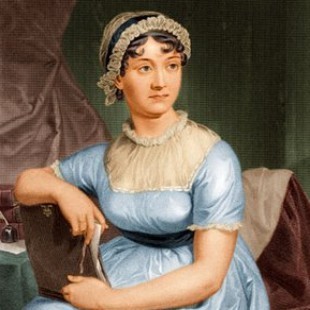
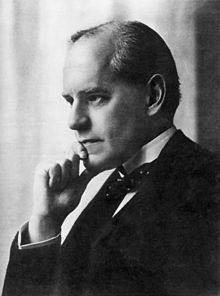
Which would you rather: to be a rich and famous novelist during your lifetime, then sink into obscurity for ever, or struggle while alive and then have everlasting popularity and prestige? Galsworthy or Austen?
I doubt the best-selling vampire and zombie novels will be more than curiosities fifty years from now. Harry Potter just might become a classic, though in my opinion the later books are less entertaining than the early ones. Room , Before I Go To Sleep , and Gone Girl seem to me, gripping though they are, unlikely to last. What do you think? Nominations for lasting/non-lasting contemporary novels in the comments, please.
I hesitantly believe that long term, the public has excellent taste. Shakespeare is valued and Thomas Kyd, Christopher Marlowe, Ben Jonson, Francis Beaumont and John Fletcher all but forgotten. But ... a book has to be published, even if it doesn't sell well during the author's life, to have any hope of becoming lastingly popular. Paintings don't have this problem - see Van Gogh. Had Jane Austen's novels just been circulated among her family, she would be unknown today, to the great loss of the reading public. Which makes me wonder how many terrific books which failed to find a publisher in the last half-century languish in drawers or forgotten in attics, never to find their readers. Thanks to Jeff Bezos, this is far less likely to happen these days.
Published on June 26, 2013 09:53
June 18, 2013
Sex in novels - more! No, less!
After the inexplicable success of 50 Shades of Grey, some writers are making their romances more sexually explicit, or penning erotica to cater to what it is perceived the market wants. (I stoutly maintain that erotica is in its own category, quite separate from other fiction, and different rules apply. For one thing, it's much easier to sell, so perhaps these authors are making a canny move.) As a reader, it's not for me, for much the same reason as I don't like musicals; the actors keep stopping to sing instead of getting on with the story.
 But while some categories are getting steamier, new chaste ones are popping up. I only heard of Amish Romance recently via Passive Guy's post Why Amish Novels Are Hot, but there's a lot of it about. You can recognize the genre as the covers generally show a young woman in one of those white bonnets with strings looking wistful. Author Sarah Stegall commented on its appeal:
But while some categories are getting steamier, new chaste ones are popping up. I only heard of Amish Romance recently via Passive Guy's post Why Amish Novels Are Hot, but there's a lot of it about. You can recognize the genre as the covers generally show a young woman in one of those white bonnets with strings looking wistful. Author Sarah Stegall commented on its appeal:
"It's an under-served market. My mother-in-law is not Amish, but grew up in that country and is an avid reader of Amish romances. She says the appeal of such stories, for her and her friends, is the lack of sex and profanity. These ladies are very uncomfortable with currently published romance novels, which qualify (to her) as pornography. She likes courtship stories, sweet adolescent romance stories, and such. Her friends also like the emphasis on religion, rather than worldly values. And yes, all of these ladies read their Amish romances on Kindles."
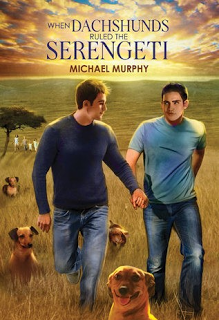 So there we go. I'm guilty myself of 'profanity' in my novels; I'm pleased that these days characters don't have to say 'mucking' as a makeshift alternative like Reg does in Mary Renault's excellent novel,
The Charioteer
. (On a side note, I cannot believe her dozy publishers have not released her books as ebooks. Or that the paperback has such a terrible cover.)
So there we go. I'm guilty myself of 'profanity' in my novels; I'm pleased that these days characters don't have to say 'mucking' as a makeshift alternative like Reg does in Mary Renault's excellent novel,
The Charioteer
. (On a side note, I cannot believe her dozy publishers have not released her books as ebooks. Or that the paperback has such a terrible cover.)
Just to confuse, there is also a steamy sub-genre of Amish romances, Gay Amish Romance. Something for every reader's taste.
While I was trawling the internet for illustrations for this post (the trouble I go to) I came across an ace site, Bad Romance Covers. Though not strictly relevant, I could not resist the cover on the right, When Dachshunds Ruled the Serengeti .
Now that's a title you wouldn't need to check to see if it had been used before...
 But while some categories are getting steamier, new chaste ones are popping up. I only heard of Amish Romance recently via Passive Guy's post Why Amish Novels Are Hot, but there's a lot of it about. You can recognize the genre as the covers generally show a young woman in one of those white bonnets with strings looking wistful. Author Sarah Stegall commented on its appeal:
But while some categories are getting steamier, new chaste ones are popping up. I only heard of Amish Romance recently via Passive Guy's post Why Amish Novels Are Hot, but there's a lot of it about. You can recognize the genre as the covers generally show a young woman in one of those white bonnets with strings looking wistful. Author Sarah Stegall commented on its appeal: "It's an under-served market. My mother-in-law is not Amish, but grew up in that country and is an avid reader of Amish romances. She says the appeal of such stories, for her and her friends, is the lack of sex and profanity. These ladies are very uncomfortable with currently published romance novels, which qualify (to her) as pornography. She likes courtship stories, sweet adolescent romance stories, and such. Her friends also like the emphasis on religion, rather than worldly values. And yes, all of these ladies read their Amish romances on Kindles."
 So there we go. I'm guilty myself of 'profanity' in my novels; I'm pleased that these days characters don't have to say 'mucking' as a makeshift alternative like Reg does in Mary Renault's excellent novel,
The Charioteer
. (On a side note, I cannot believe her dozy publishers have not released her books as ebooks. Or that the paperback has such a terrible cover.)
So there we go. I'm guilty myself of 'profanity' in my novels; I'm pleased that these days characters don't have to say 'mucking' as a makeshift alternative like Reg does in Mary Renault's excellent novel,
The Charioteer
. (On a side note, I cannot believe her dozy publishers have not released her books as ebooks. Or that the paperback has such a terrible cover.)Just to confuse, there is also a steamy sub-genre of Amish romances, Gay Amish Romance. Something for every reader's taste.
While I was trawling the internet for illustrations for this post (the trouble I go to) I came across an ace site, Bad Romance Covers. Though not strictly relevant, I could not resist the cover on the right, When Dachshunds Ruled the Serengeti .
Now that's a title you wouldn't need to check to see if it had been used before...
Published on June 18, 2013 10:34
June 8, 2013
Versions of reality
 The railway behind my/Beth's flat in the snowWhen I write, I imagine the scene as a film, and I know exactly where it takes place. Sometimes I visit the setting so I get the details right. Tori's flat in
Ice Diaries
is in Bézier, a block on Old Street roundabout, and the manager very kindly showed me round and let me take photos. Sometimes I use places I've looked up on Google, using Street View and estate agents' websites.
The railway behind my/Beth's flat in the snowWhen I write, I imagine the scene as a film, and I know exactly where it takes place. Sometimes I visit the setting so I get the details right. Tori's flat in
Ice Diaries
is in Bézier, a block on Old Street roundabout, and the manager very kindly showed me round and let me take photos. Sometimes I use places I've looked up on Google, using Street View and estate agents' websites.Beth's flat in Replica is based on my flat, including the non-working entry phone so Beth has to open a window and lean out to see who has rung her bell. Beth Two's dash through the gardens on to the railway station describes the layout as it was when I wrote it, though the station is now larger. (Nothing in London stays the same for long.)
Chatting about Replica to the offspring's boyfriend, I asked him how he'd imagined Beth's flat. "I think of it as this one," he said. And it occurred to me, he was one of only a handful of readers who would have exactly the same picture in his head of Beth's home and Beth Two's escape as I did.
Of course, this doesn't matter at all. If an author has done his job properly, the right reader will be able to imagine the scene correctly, though with variations. I can work out when I read some of my favourite books from the settings that come to mind, borrowed from where I was living at the time. Quite unlike films, where we all picture the characters and settings as we have seen them on the screen.
It's strange to think of the thousands of different versions of my novels that play in people's heads, as each reader brings his or her unique experience of life to my fiction.
Published on June 08, 2013 03:44
June 1, 2013
Draft2Digital and leaving KDP Select
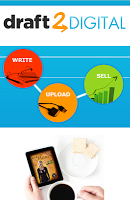 When KDP Select started at the end of 2011, I was an early adopter. My books had sold very well on Amazon, while selling hardly any via Smashwords, so the decision was a no-brainer for me. And at the start of 2012 it enabled me to sell huge quantities of ebooks at a higher price than I'd been able to charge before, as well as making money from Kindle Owners' Lending Library (KOLL).
When KDP Select started at the end of 2011, I was an early adopter. My books had sold very well on Amazon, while selling hardly any via Smashwords, so the decision was a no-brainer for me. And at the start of 2012 it enabled me to sell huge quantities of ebooks at a higher price than I'd been able to charge before, as well as making money from Kindle Owners' Lending Library (KOLL).But what has it done for me lately? Over the past year, the benefits of KDP Select have dwindled, and Amazon has not yet offered anything to replace them. I'm not criticizing Amazon; Jeff Bezos runs his business extremely well, and has no obligation to promote my books for me. It's possible that Amazon no longer needs indie authors in the same way after the DoJ's judgement against the Price-Fix Six. I'm grateful for the opportunities Amazon has put my way, enabling me to prove there is a market for my writing and make quite a bit of money.
But it may be time to move on. Last week I came across a long article on Survivorship Bias, including this observation:
Lucky people tend to constantly change routines and seek out new experiences. The lucky try more things, and fail more often, but when they fail they shrug it off and try something else.
These days there is an alternative to Smashwords' clunky meatgrinder: Draft2Digital. Its site is classy, non-buggy and easy to use, its terms eminently reasonable. Support is fast and helpful. D2D's software converts your Word document into an ebook with a ToC and chapter breaks. Five of my six books reached the end of their three months in KDP Select yesterday, and I've now loaded them on Draft2Digital. Within the next week or two, they will go live on Barnes & Noble, Kobo and Apple's iBookstore.
I'm not expecting to sell much, at any rate initially, but I know from Statcounter that people are looking for epub versions of my novels, and now they will be able to buy them. I hope to be lucky - but if it doesn't work out, I'll try something else.
Published on June 01, 2013 07:43
May 21, 2013
More rules I could do without
 Why are some writers so fond of rules? Why are some indie writers so fond of rules? Isn't one of the main benefits of self-pubbing that you don't have to toe the line any more?
Why are some writers so fond of rules? Why are some indie writers so fond of rules? Isn't one of the main benefits of self-pubbing that you don't have to toe the line any more?Back in 2009/10 when I was submitting Remix to agents, there were more rules than you could shake a stick at, and writers would anxiously obsess over them on forums. Double spacing yes, but should we really use ugly Courier or was Times New Roman acceptable? Agents, we knew, were captious and huffy creatures. There were lots of crimes that would result in an agent tossing your three chapters unread into the bin. These included omitting to enclose a self-addressed stamped envelope (I forgot once, and sure enough, didn't get the form rejection I was looking forward to adding to my collection). You had to study the agent's precise requirements and observe them to the letter, or she wouldn't even curl her pretty lip over your typescript.
We all did what we were told. To be fair, until Amazon changed everything we had no choice. (I may say it's still going on - read Carol Blake's handy list of 29 Ways NOT To Submit To An Agent. Reading that made me realize just how much I love not being a part of that scene any more.)
What irks me now is indies coming up with their own rules. Our book, we are told, will not be ready to publish until we have hired a professional editor, proofreader, formatter and cover designer. Not may not, but will not. Fleur Philips goes further: “One thing I feel indie or self pub authors MUST do for publicity and marketing is to hire a really good publicity firm to handle marketing and public relations ... if you can’t afford it, find a way to make it happen!” (Plih. Bog off, Fleur.) Others tell us we must write several books a year to succeed, and divide our time between marketing and writing.
To which I say, we are big grown-up indies. I can decide for myself whether or not I need to pay a proofreader (not, actually) and do all that other stuff. I do not need the new orthodoxy telling me what to do, and neither do you.
Published on May 21, 2013 09:15
May 10, 2013
Just start shooting
Published on May 10, 2013 04:30
May 3, 2013
Lessons for Big Publishing from Kodak
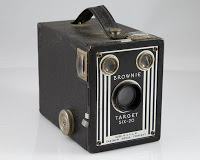 Whatever happened to Kodak? Recently I treated myself to a new digital camera (a Canon ixus 500 HS, since you ask, and I'm very pleased with it). This morning a thought popped into my head; why, when I was browsing the internet for cameras, were there no Kodaks there?
Whatever happened to Kodak? Recently I treated myself to a new digital camera (a Canon ixus 500 HS, since you ask, and I'm very pleased with it). This morning a thought popped into my head; why, when I was browsing the internet for cameras, were there no Kodaks there?At one time, Kodak was the big name in cameras and film. In 1900 they launched the Box Brownie at $1.00, which brought photography within the reach of the masses. The brand was huge throughout the twentieth century.
Last year they went bankrupt.
I bet you didn't know that in 1975, a Kodak engineer called Steve Sasson created the first digital camera, which took photos with a modest 10,000 pixels. Kodak went on to patent many digital technologies which are used in modern cameras, but it wasn't till 1995 that they launched the DC40, their first digital camera. What happened next? Not a lot. Kodak was afraid of cannibalizing their own business - 90% of film sales, 85% of camera sales in the US - so digital was left on the back burner, while other manufacturers rushed in to fill the gap. Digital boomed, while legacy photography dwindled, and Kodak dwindled right along with it.
Does any of this sound familiar? When ereaders appeared, Big Publishing hoped they were a passing fad, ignored the opportunities digital offered, and colluded to keep ebook prices high so as not to impinge on print sales. Meanwhile Amazon flourished and self-publishers became a force to be reckoned with.
Let me quote Pete Pachal's conclusions from his interesting article on the subject:
"The most immediate takeaway from the fall of Kodak is clear: Don't be afraid to cannibalize your own business in the name of progress. This is seen time and again in the digital revolution: Sony's reluctance to develop a competent digital Walkman left an opening for the iPod. Blockbuster laughed off Netflix in the early days, then went bankrupt when it couldn't compete with its Web-based competitor. And iPads may be eating up some Mac sales, but Apple's bottom line is stronger than ever.
"True innovative spirit is much more often found in smaller companies and startups rather than old-school behemoths of yesteryear. After all, if you don't have much to lose, you tend to make many more all-in bets. But, as Kodak has shown, if all you do is play it safe, the cost just to stay in the game will whittle you down until you've got nothing left."
Published on May 03, 2013 06:32




